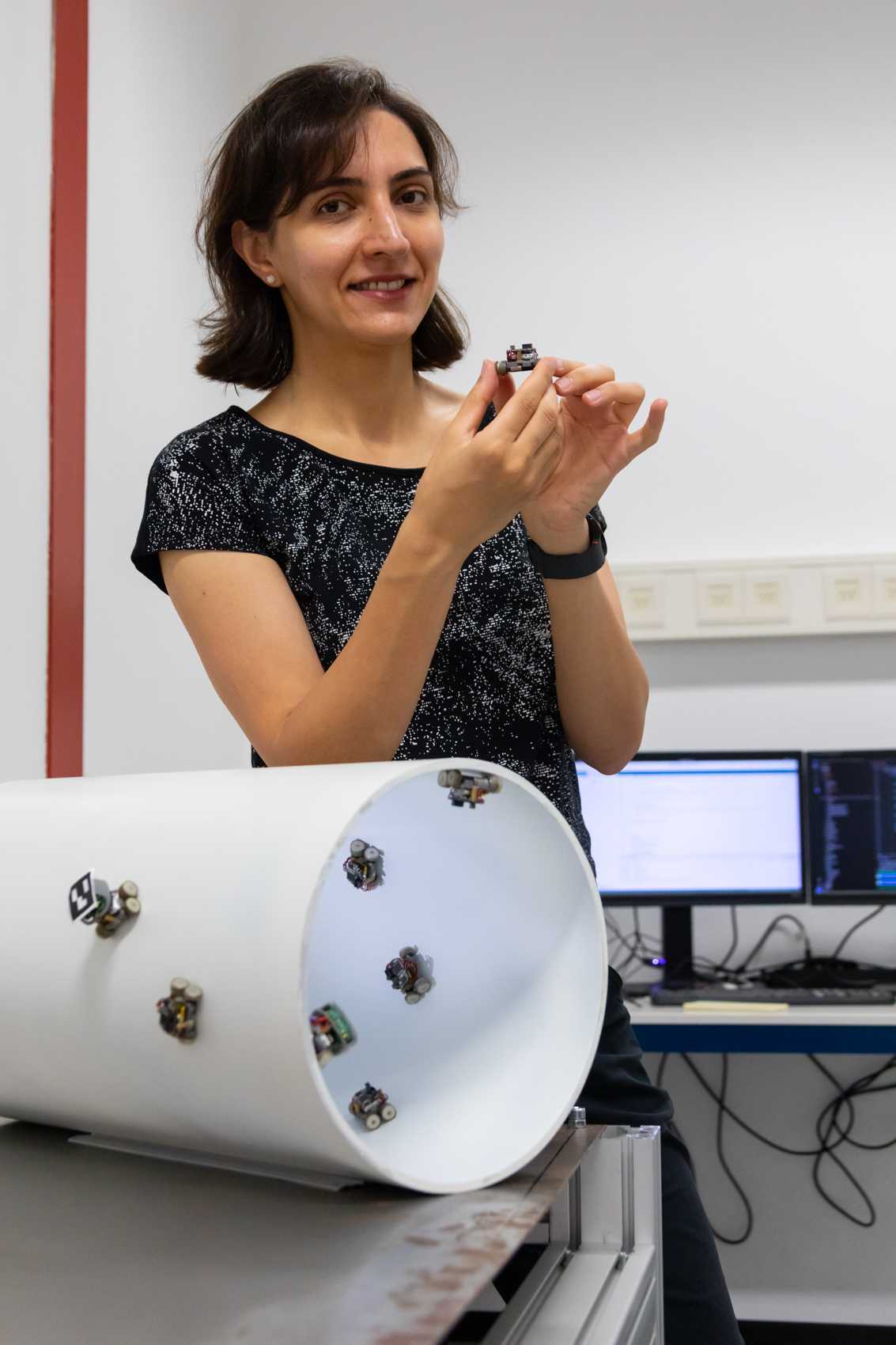Tiny robots, big responsibility: A peek into the world of swarm robotics
Picture this: you are walking over a bridge and suddenly you discover little robots crawling around the structure. They look endearing, almost like a swarm of insects. How did they get there, and what are they doing? Little did you know that they are actually tiny employees, monitoring the integrity of the bridge and saving lives in the process.
Sounds unbelievable? Perhaps, but it is exactly what Dr. Bahar Haghighat, a researcher at CogniGron, is working on. Our student assistant Amalie Fedorova had a chat with her to learn more about the topic and answer all your potential questions about the ins and outs of robot swarms.
So, what is a robot swarm?
Let’s start with defining what robot swarms are in the first place. Swarms are a common occurrence in nature — think of birds, ants, or fish. Swarm behaviour can have enormous advantages for species, for instance helping them achieve goals that one individual would struggle with, like fending off a predator or covering large areas for collecting food. This kind of behaviour has been a point of interest for scientists for multiple decades now.
More recently, there has been growing interest in drawing inspiration from nature and going beyond it to create swarms of robots. Apart from being fun to build and experiment with, as Bahar puts it, these robots also serve incredibly valuable functions. Robot swarms can, for example, be used for monitoring air pollution across large areas or for structural health monitoring.
Now we’re back to those tiny robots on a bridge. But how exactly do they work?
Listening to the vibrations
The robots are about three centimetres long and are equipped with magnetic wheels that allow them to move freely on surfaces like the metal parts of a bridge. In addition, they have a vibration sensor built into them. What is it for? Robotics commonly uses sensors inspired by senses like vision, sound, and smell. While vibration is a less explored territory, it can be incredibly telling. When an object is moved — for example by wind, or traffic — it vibrates. Although this is unnoticeable to humans, a robot can sense it. If the structure is damaged, the vibration pattern changes. This difference is picked up by the robot, allowing changes to be detected quickly and damage to be localized and addressed before it becomes dangerous.

Why current methods don’t cut it
This marks a huge improvement from how structural health monitoring is typically done today. There are two commonly used methods: human inspection and sensor boxes. It’s probably not surprising that human inspection isn’t ideal — it’s expensive, potentially dangerous, and happens infrequently (in the Netherlands, structural inspections take place just once every six years). Sensor boxes, which already use vibration detection, offer a more modern alternative. However, since they are static and sparse, they often lack the resolution needed. The changes in vibration caused by early-stage damage are actually quite small and can only be noticed when close to the source. So if the sensor is too far away, it simply won’t catch it. The need for an alternative is clear.
Mobile, intelligent, and adaptable
That’s where mobile robots come in. These little machines aren’t just sensors on wheels — they can also process data locally. Instead of sending everything to a computer in the cloud, they analyse vibrations on the spot. This kind of on-the-edge processing reduces delays and improves responsiveness. Of course, bringing robot swarms to life isn’t without its challenges. As Bahar points out, hardware components change rapidly. What’s available today might be discontinued in the future, so staying up to date requires flexibility. Before they’re deployed in the real world, the robots also need to be tested in simulators to ensure they can handle complex environments — like the uneven, rust-covered surfaces of a real bridge.
A safer future
Bahar is hopeful that one day her robot swarms will be inspecting a variety of structures, from bridges to pipelines to offshore platforms. And when they do, they won’t just be crawling — they’ll be listening, analysing, and protecting.
Although it might still take a while until tiny robot swarms are crawling around on bridges, when they do, remember that those little machines developed at CogniGron are quietly working to keep you safe.

